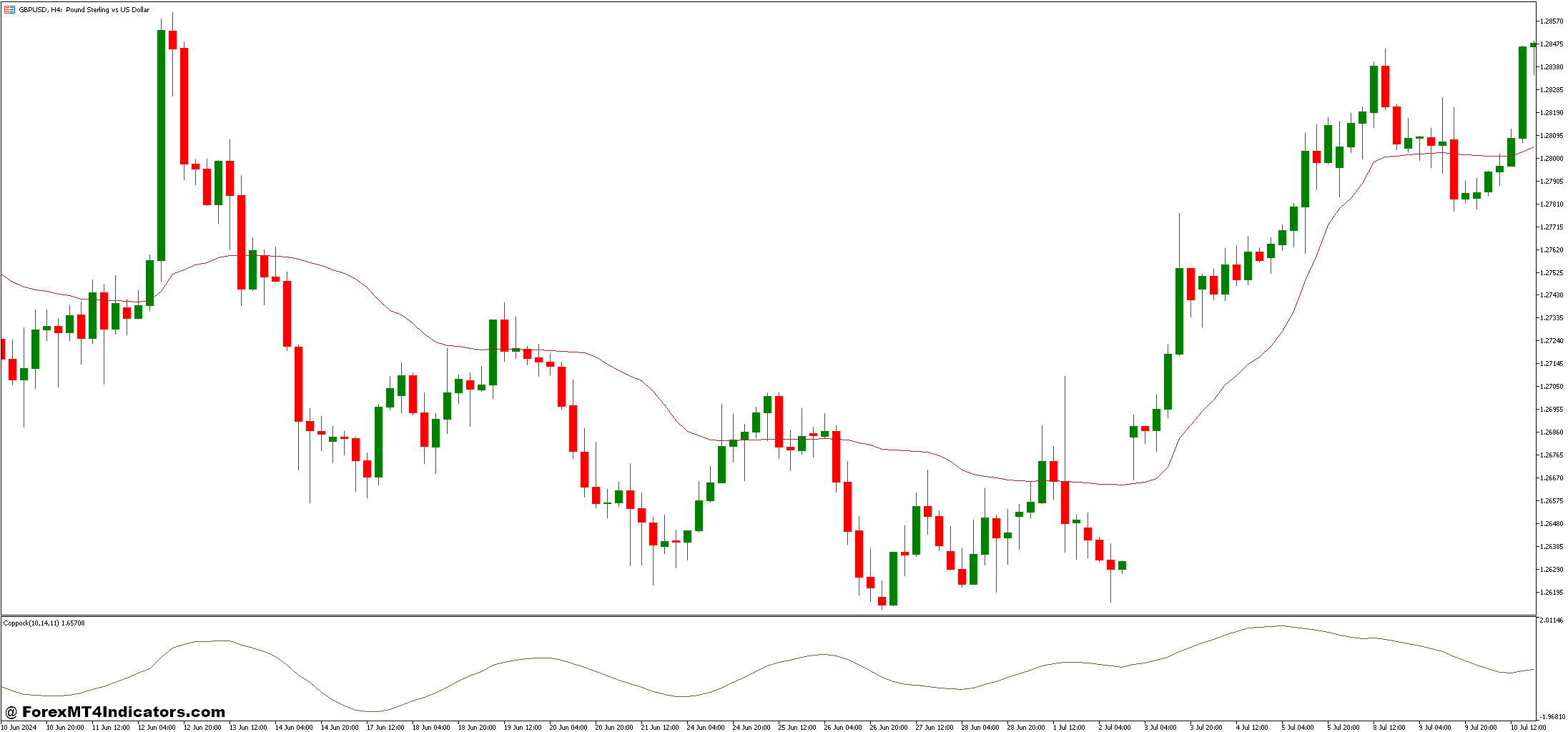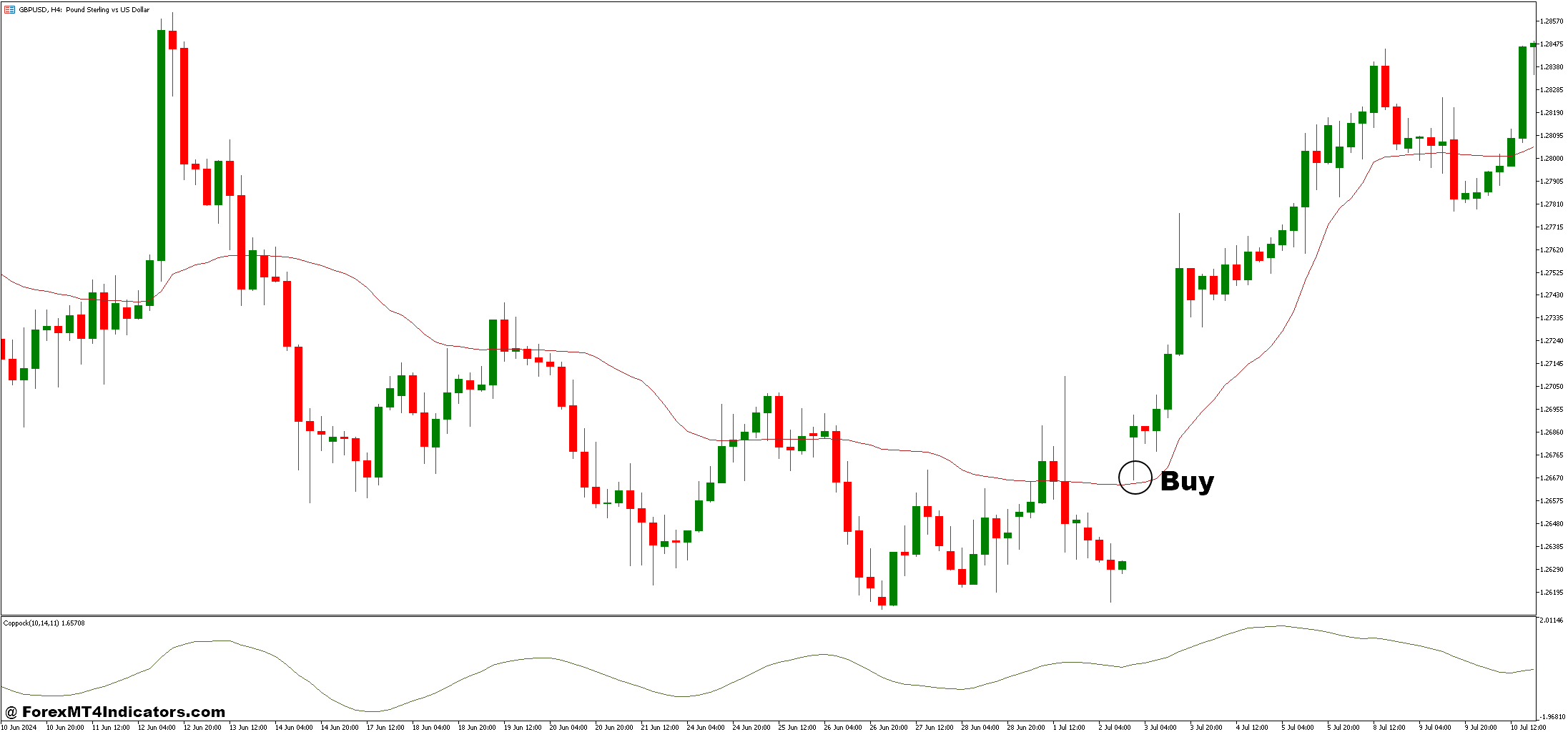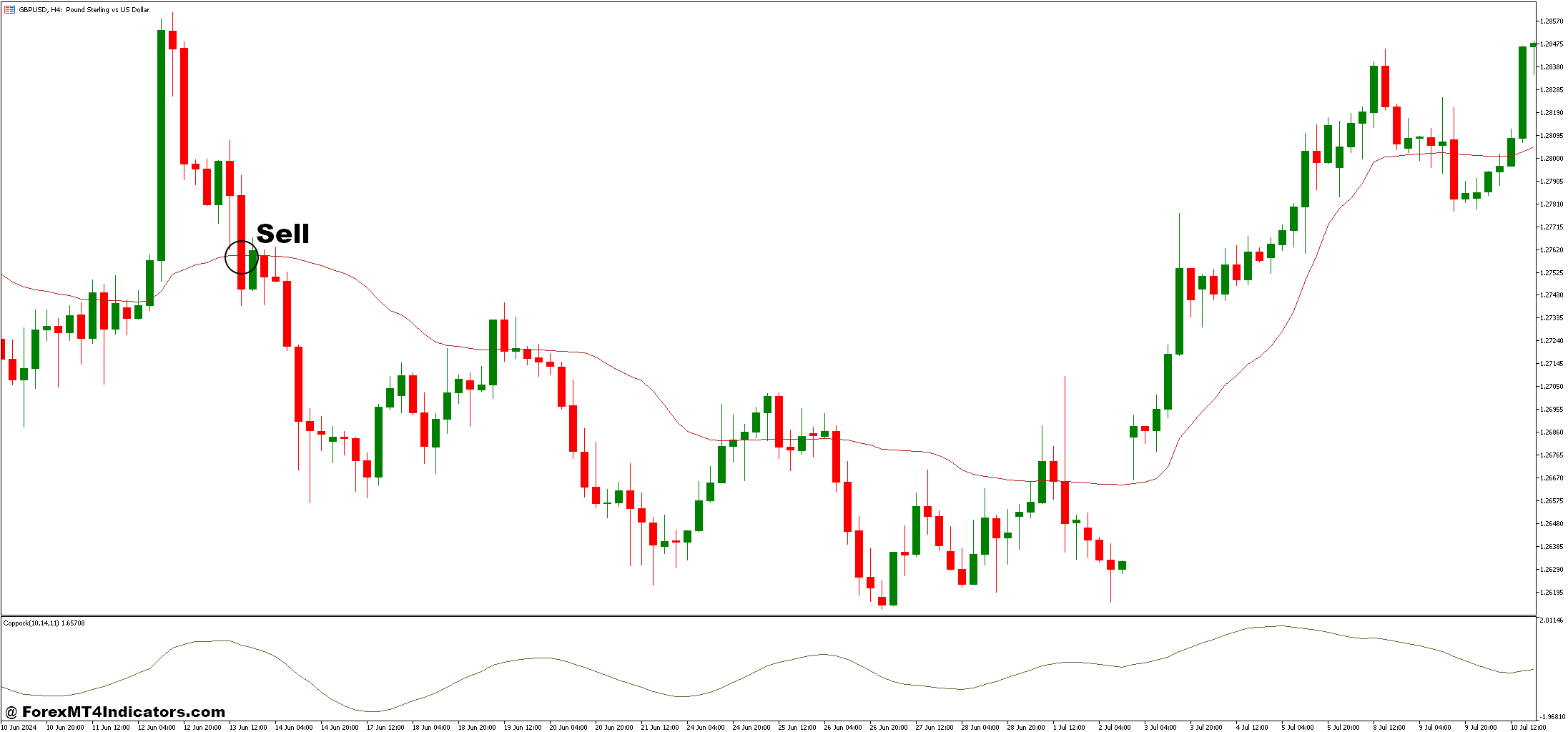
The Coppock and KAMA Forex Trading Strategy is a powerful combination of two distinct indicators designed to provide traders with a clear and adaptive approach to navigating the forex market. The Coppock Curve, a momentum indicator, is widely known for its ability to detect long-term trend reversals, making it ideal for traders looking to identify key turning points in the market. Paired with the Kaufman Adaptive Moving Average (KAMA), which adjusts dynamically to market volatility, this strategy offers a blend of precision and flexibility. Together, these tools equip traders to filter out market noise while staying attuned to significant price movements, ensuring well-informed trading decisions.
What makes this strategy stand out is the complementary nature of its components. While the Coppock Curve excels at highlighting the broader direction of the market, KAMA focuses on tracking price movements with an emphasis on adaptability. This synergy creates a robust framework that balances long-term trend analysis with real-time responsiveness to market changes. Traders can use this combination to confidently identify entry and exit points, particularly in trending markets, reducing the risk of false signals and enhancing profitability.
In the fast-paced forex market, having a strategy that blends reliability with adaptability is crucial for success. The Coppock and KAMA Forex Trading Strategy caters to both novice and experienced traders by offering a structured yet flexible system. Whether you are seeking to refine your trading methods or explore a new approach, this strategy provides valuable insights and practical tools to help you stay ahead in the ever-evolving forex landscape.
Coppock Indicator
The Coppock Indicator, also known as the Coppock Curve, is a momentum-based tool designed to identify long-term trend reversals in financial markets. Developed by Edwin Coppock in the 1960s, the indicator was originally intended for stock market analysis but has since found utility in forex trading. It operates on the premise that emotional market cycles, such as optimism and pessimism, drive price movements. By calculating a weighted moving average of the sum of two different rate-of-change (ROC) values, the Coppock Indicator smooths out short-term fluctuations and focuses on broader trends.
One of the standout features of the Coppock Indicator is its simplicity and effectiveness in recognizing potential buying opportunities. Traditionally, values below zero are considered a signal for an upward reversal, especially when the curve begins to rise from negative territory. This makes it particularly useful for traders looking to enter long positions during the early stages of a bullish trend. However, while it excels in detecting upward momentum, it is less effective for pinpointing sell signals, as it was not specifically designed for bearish markets.
Despite its straightforward application, the Coppock Indicator works best when used alongside complementary tools. In the Coppock and KAMA Forex Trading Strategy, it provides the directional framework, helping traders identify the overall trend and assess market sentiment. Its role as a leading indicator makes it a valuable component of the strategy, offering insights into potential reversals before they occur.
KAMA Indicator
The Kaufman Adaptive Moving Average (KAMA) is a trend-following indicator that stands out for its ability to adapt to varying market conditions. Developed by Perry Kaufman in 1998, the KAMA differs from traditional moving averages by incorporating a smoothing factor that adjusts dynamically to market volatility. When the market is trending strongly, KAMA reduces its sensitivity to noise, offering a smoother line that focuses on the dominant trend. Conversely, during periods of consolidation or sideways movement, it becomes more responsive to price changes, ensuring that traders don’t miss significant shifts.
The key advantage of the KAMA Indicator lies in its adaptability. Traditional moving averages often struggle to balance responsiveness with noise reduction, leading to delayed signals or whipsaws. KAMA solves this issue by using an Efficiency Ratio (ER) to gauge the market’s price action. This ratio determines how much weight is given to recent price movements, allowing the indicator to adjust its behavior based on current conditions. As a result, KAMA offers a clear view of the prevailing trend while minimizing the impact of insignificant price fluctuations.
In the Coppock and KAMA Forex Trading Strategy, KAMA plays a crucial role in filtering out false signals and providing precise entry and exit points. By aligning the adaptive nature of KAMA with the trend-reversal insights of the Coppock Indicator, traders can achieve a balanced and effective approach to the forex market. This synergy ensures that the strategy remains robust across different market environments, enhancing both accuracy and profitability.
How to Trade with Coppock and KAMA Forex Trading Strategy
Buy Entry
- The Coppock Curve must be rising, preferably moving upward from negative territory, signaling bullish momentum.
- The price should be trading above the KAMA line.
- The KAMA line should be sloping upward, confirming an uptrend.
- Wait for a slight pullback of the price toward the KAMA line.
- Enter the buy trade when the price bounces upward after touching or nearing the KAMA line.
Sell Entry
- The Coppock Curve must be reversing downward, particularly from a peak, signaling bearish momentum.
- The price should be trading below the KAMA line.
- The KAMA line should be sloping downward, confirming a downtrend.
- Wait for a slight retracement of the price toward the KAMA line.
- Enter the sell trade when the price moves downward after touching or nearing the KAMA line.




